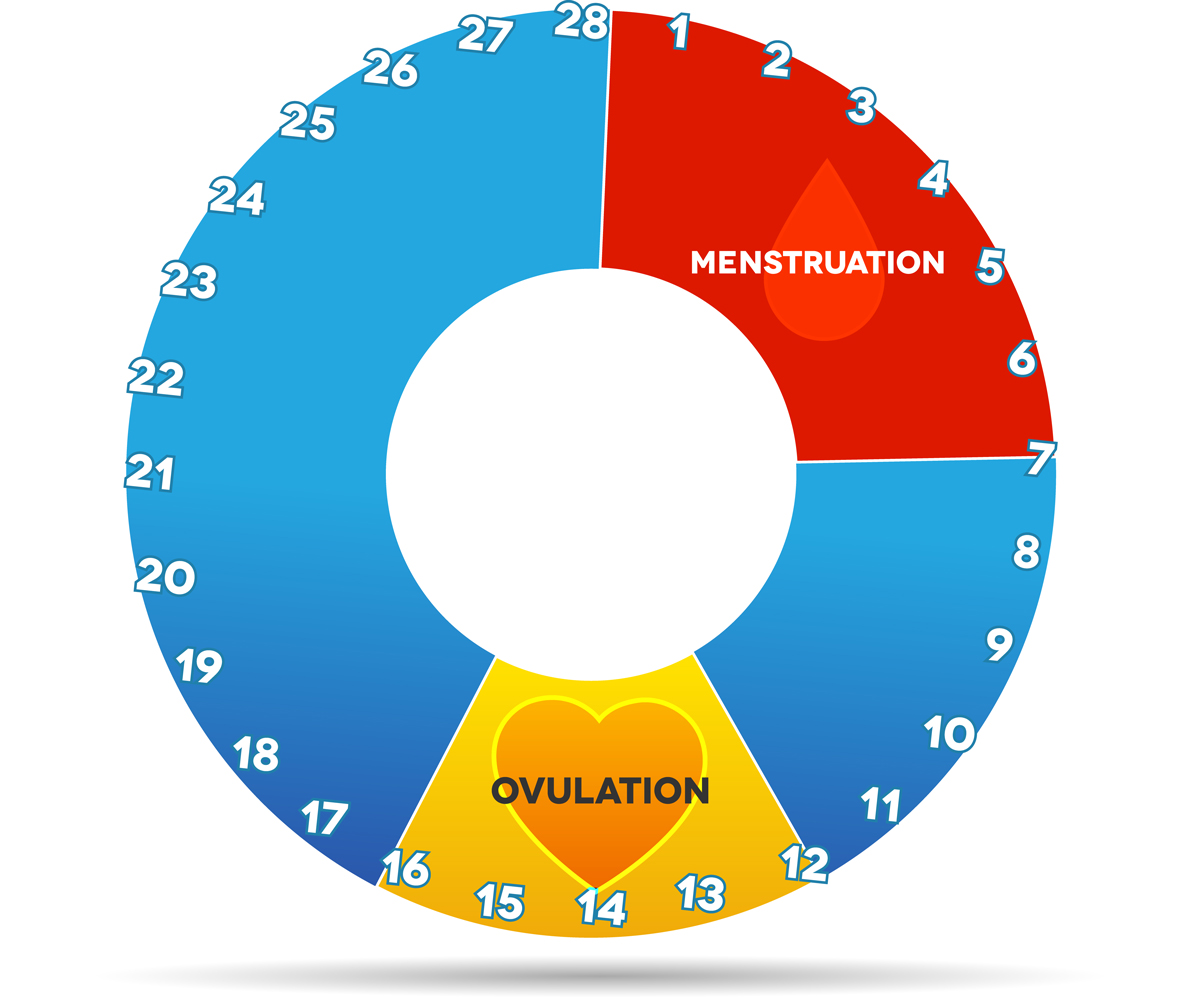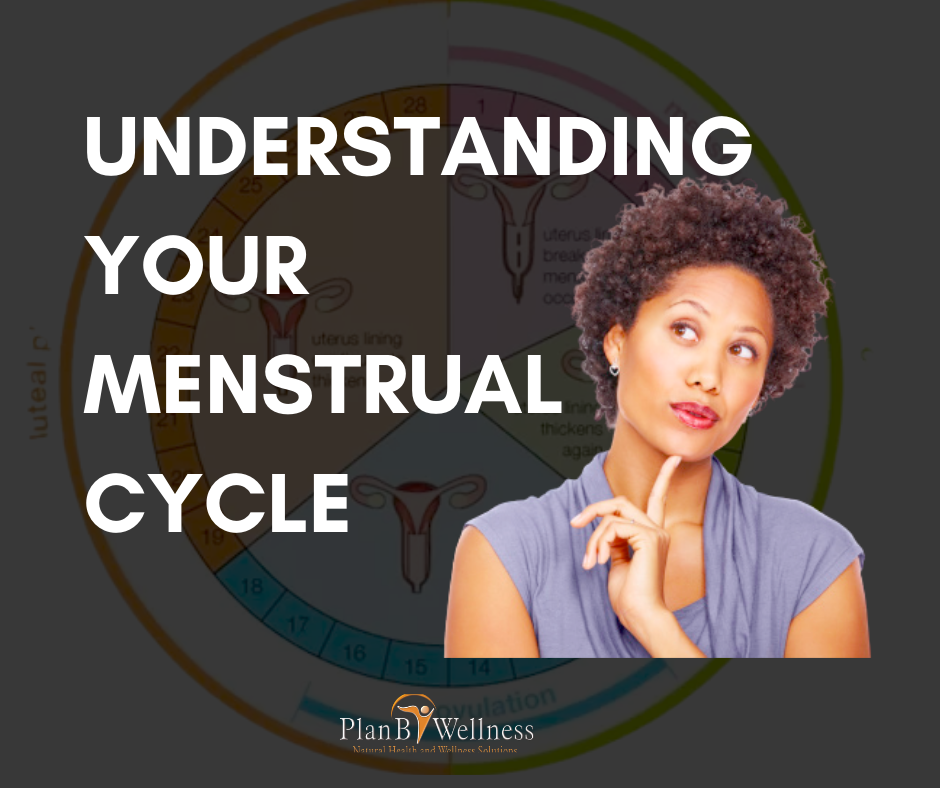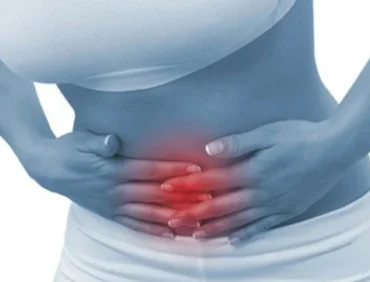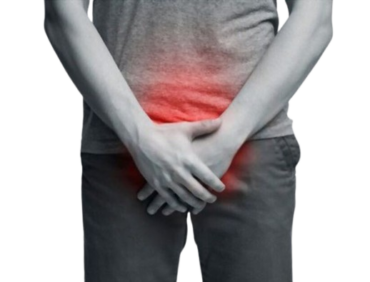If the goal is to achieve pregnancy, a woman who is all prepared for the parenting life needs to understand how her menstrual cycle works.
If you’re a female reading this article, I have 2 assumptions to make about you – It’s either you’re ready for the parenting life or you’re in search of information that has to do with getting pregnant and a healthy menstrual period.
Whichever one you fall into, you would surely find answers. So, keep reading!
WHAT IS THE MENSTRUAL CYCLE?

With the existence of the word “cycle”, it shows that it’s a series of events regularly repeated in the same order. The menstrual cycle is the body’s way of preparing a female for possible pregnancy every month.
Some hormones produced by two structures in your brain (the hypothalamus and the pituitary gland), together with your ovaries, interact together (in a complex manner) to regulate your menstrual cycle.
These hormones include luteinizing hormone, follicle-stimulating hormone, oestrogen and progesterone.
LENGTH OF YOUR MENSTRUAL CYCLE
How long is your menstrual cycle?
Your menstrual cycle starts on the day your period begins (day 1 of bleeding) and ends the day before the next period. The average menstrual cycle lasts for 28 days.
If the length of your cycle falls between 21 and 35 days; congratulations! Your menstrual cycle is normal.
On the days you realize the length of your cycle is not the same as last month’s, there’s nothing to fret about. The number of days in a woman’s menstrual cycle can vary month to month.
Read more about likely causes of menstrual irregularities here.
I NEED TO CALCULATE THE LENGTH OF MY MENSTRUAL CYCLE

That’s very easy! But you can’t do it alone, you would need assistance. By assistance, I mean a calendar, a diary and a pen. Now that you have your assistance, follow these steps:
- Write down the first day of your period (the first day of your period is the day the ‘red visitor’ appears). You could also circle the date on your calendar.
- Write down the date before the first date of your next period. You could also circle the date on your calendar.
- Using your calendar, count from the first day of your period to the day before you began your next period. The figure you get is the length of your menstrual cycle.
For example, your cycle started on January 7 and your next period came on February 5, your cycle would be January 7 to February 4. That makes your menstrual cycle 29 days.
CALCULATING YOUR AVERAGE MENSTRUAL CYCLE
For the fact that menstrual cycles tend to vary month to month, knowing your average menstrual cycle is a good idea.
How do you calculate that?
- Monitor your cycle for at least 3 months. Don’t forget to make use of your assistance (calendar, diary, pen) each cycle.
- Collect the menstrual cycle lengths for the 3 months
- Add the days of your cycle for each month together to give you a total number
- Divide the total number by the number of months monitored. This will give you your average cycle length.
For example, if you had a 29 day cycle in January, a 30 day cycle in February and a 28 day cycle in March, your average would be (29+30+28)/3. That equals a 29 day average cycle.
It’s best to continue to track your cycle throughout your life, as this can help you know when something is off.
THE EVENTS WITHIN YOUR CYCLE
A number of things happen during your menstrual cycle. The timings of these events are not the same in every woman; after all, our bodies don’t function the same way. The timings are minutely different and subject to change over time.
In this section, you would know the numerous events that happen during your menstrual cycle and the days in which these events happen. We would be using the average menstrual cycle (28 days) for description.
Days 1-5 (the menses phase)
Day 1 of your cycle is the day you begin your period (menstrual bleeding). A woman’s period can last for 3 to 8 days, but typically, the average period lasts for 5 days. The first 2 days (i.e. day 1 & day 2) are the days you experience heavy bleeding.
Days 6-14 (the follicular phase)
The moment your bleeding stops, that’s all the sign your body needs to start preparing for the possibility of pregnancy.
Your body spends these days (days 6-14th) getting your uterine lining thickened and enriched with blood and nutrients. This action is as a result of a rise in the oestrogen hormone.
Read more about the good and the bad side of oestrogen hormone here.
In addition, the follicle-stimulating hormone, just as its name implies cause follicles in your ovaries to grow.
During days 10 to 14, one of the growing follicles will form a fully mature egg (ovum).
Ovulation Phase

This happens roughly around day 14 (do not forget we are making use of a 28-day menstrual cycle). During this phase, another hormone known as Luteinizing hormone suddenly increases – causing one of your ovaries to release the fully mature egg. This whole thing is known as ovulation.
Read about natural remedy that helps enhance ovulation here.
The released egg would journey through the Fallopian tubes. If sperm is present in your Fallopian tube, fertilization may occur, and as time goes by, pregnancy may happen.
If your Fallopian tubes are blocked, it will hinder fertilization and then lead to delay in conception.
Days 15-28 (The Luteal Phase)
During these days, the released egg begins to make its way through the Fallopian tubes to the uterus. Your body is aware of this, so it releases more of the progesterone hormone, causing a rise in its level. The purpose of this is to help prepare the uterine lining for pregnancy, just in case there’s a sperm available to fertilize the egg.
If fortunately there’s a sperm and the egg gets fertilized; and implants itself in your uterine wall, then, you become pregnant.
However, if the case is otherwise, oestrogen and progesterone level drops. Your body signals your uterus to prepare to shed its lining. Since the egg couldn’t get fertilized, it breaks down and is shed along with lining.
Your cycle begins again on Day 1 of menstrual bleeding.
THE DAYS PREGNANCY IS POSSIBLE

We are referring to the ‘fertile window’. During a woman’s menstrual cycle, there are days a woman is more likely to conceive. The ‘fertile window’ is however dependent on the length of the menstrual cycle, which is not the same for all women.
The ovulation day (the 14th day in your cycle – depending on the length of your menstrual cycle in that month) and five days before it are regarded as the ‘fertile window’ of a woman. This means that having sexual intercourse on any of these 6 days would most likely result in pregnancy.
THE MECHANISM
During ovulation, the egg released from your ovary travels down your Fallopian tube.
An egg can only survive in the reproductive tract for 12-24 hours.
If the sperm from your partner is able to meet with and fertilize your released egg during this time, conception can occur. If otherwise, the egg sheds with your uterine lining (menstruation).
This is to say, your chances of getting pregnant are highest within 24 hours of ovulation and the day before.
You’re probably asking the question, “how about the five days before ovulation?” If you have sex in the last 5 days before ovulation, pregnancy is possible as well. That’s because sperm is capable of surviving in the reproductive tract for 5 days – a 5-day old sperm would still fertilize a newly released egg.
Looking to get pregnant? Aim to have sex every 1-2 days during your fertile window.
If your man is having issues with his sperm or fertility in general, click here to read about the natural remedies for different male infertility issues.
PLANNING YOUR PREGNANCY
In planning pregnancy, you need to know your fertile window.
Although there are options of using online ovulation calculators; they aren’t always accurate – the regularity of many women’s cycles are not consistent.
Hence, it’s best you stick with the effective methods;
- Tracking Your Cycle
- Ovulation Predictor Kits (OPKs)
- Monitoring Cervical Mucus
- Charting Basal Body Temperature (BBT)
- Fertility Monitors
WHAT IF MY MENSTRUAL CYCLES ARE IRREGULAR?
If your menstrual cycle is irregular, calculating your ovulation date would be difficult. Hence, you should resort to doing ovulation urine tests (a home test used by women to help predict when an egg release is likely) or consider seeking advice from your doctor.
If you have ovulation challenges, click here to see a natural remedy to enhance ovulation.
HOW LONG SHOULD I TRY BEFORE SEEKING TREATMENT?

If after trying to conceive naturally without success for 1 year (for 35 years and below) or 6 months (for above 35 years), you should seek treatment.
You can begin by visiting your doctor and asking for simple fertility tests. This would help you find out the cause of your inability to get pregnant.
Afterwards, getting medical treatment is an option. Getting natural treatment (female infertility remedy kit) is also another option. Remember, the goal is to achieve pregnancy.
Click here to read more about the Female Infertility Remedy Kit.
See testimonies of past users on this page.
If you have any questions regarding menstrual cycle and pregnancy; let us know in the comment section below.
Was this information helpful? Share with others.
Stay healthy and never give up!
Plan B Wellness Nigeria Limited
Whatsapp, Call, SMS: +2348099666658, +2348099666648
Call and SMS only: +2348099666650
Email: consult@planbwellness.com
IG: @planbwellness
Twitter: @planbwellness














[…] You have monthly menstrual cycles (ovulate) […]
[…] menstrual period, which we commonly refer to as just a “period” is the shedding of your uterine lining […]
[…] is a phase in the menstrual cycle. It is the release of the mature egg (ovum) from a woman’s ovary which occurs at about day […]
[…] Learn more about menstruation here. […]
[…] Prolonged menstruation […]
[…] an egg from traveling from the ovaries through the Fallopian tubes. This procedure does not affect menstrual cycle but prevents sperm from traveling up to the […]